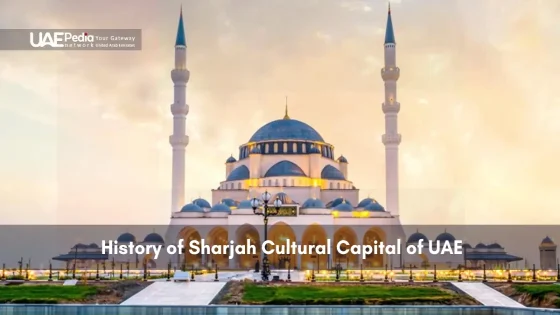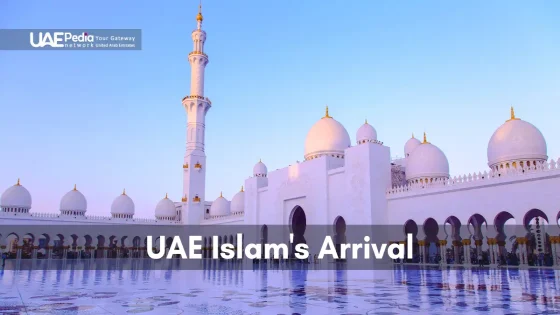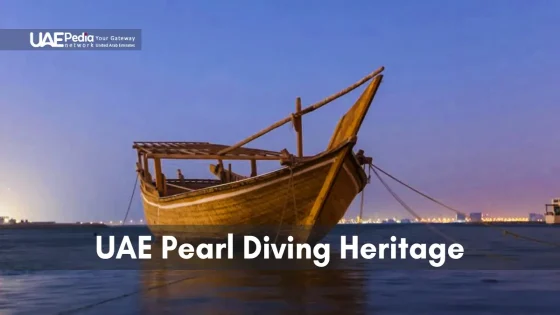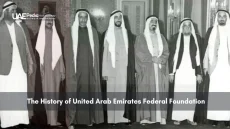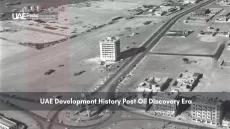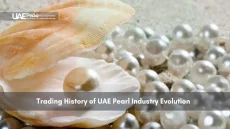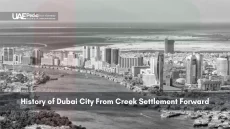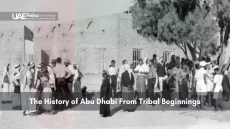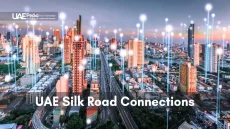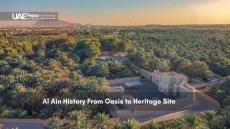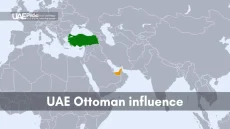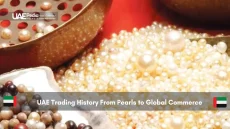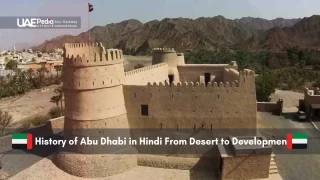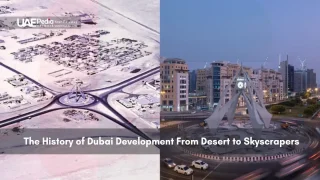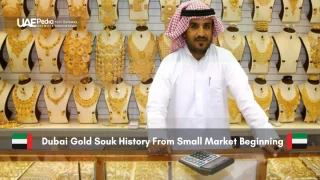What if I told you one UAE city has been a cultural crossroads for over 5,000 years? Sharjah isn’t just another skyscraper-dotted metropolis—it’s a living archive where pearl divers’ whispers echo beside contemporary art galleries.
This Emirate thrives on contrasts. Bronze Age trading posts laid its foundation, while visionary leadership transformed it into UNESCO’s first Arab Capital of Culture. The Al Qasimi dynasty—particularly Sultan bin Muhammad Al Qasimi—steered this evolution, preserving heritage sites while commissioning groundbreaking museums.
We’ll show you how to:
- Trace maritime roots through souks and shipbuilding yards
- Spot 20th-century innovations hidden in traditional architecture
- Experience festivals that turn archaeological sites into open-air theaters
Pack your curiosity—we’re decoding five millennia of stories written in desert winds and mangrove shores.
Introduction to Sharjah’s Rich Heritage
Imagine standing where desert sands meet turquoise waters—this is Sharjah, the UAE’s beating cultural heart. Wedged between Abu Dhabi’s gleaming towers and Ras Al Khaimah’s mountain vistas, this emirate thrives as a living mosaic of tradition and innovation. Its coastal plains and inland oases have nurtured communities for 5,000 years, creating a layered identity that’s both timeless and forward-looking.
Geographic & Cultural Overview
Sharjah’s 2,590 km² area acts like a bridge—connecting northern emirates to Abu Dhabi’s political hub while guarding the Gulf’s eastern flank. Unlike Ras Al Khaimah’s rugged peaks or Dubai’s hyper-modern skyline, here you’ll find coral-stone forts beside glass-walled museums. The Al Qasba waterfront isn’t just a promenade—it’s where fishermen still mend nets steps from digital art installations.
Significance in the Gulf Region
What makes this place tick? Location, location, location. Sharjah’s natural harbors made it a medieval trade nexus for pearls and spices. Today, its position between Abu Dhabi’s oil wealth and Ras Al Khaimah’s adventure tourism creates a unique cultural alchemy. As one local historian puts it: “Our sands remember caravans, but our streets speak tomorrow.”
From the aromatic alleys of Blue Souk to the protected wetlands of Wasit, every corner reveals how geography shaped identity. The emirate’s compact area packs in 16 museums—more per square mile than any Gulf neighbor. Ready to explore how centuries of crossroads culture built this treasure? Let’s dive deeper.
Ancient Beginnings and Early Settlements
Dig your toes into Sharjah’s sun-warmed sands, and you’re stepping on layers of stories older than the pyramids. Recent excavations reveal pottery shards and stone tools whispering secrets of a bustling Bronze Age hub—proof this wasn’t just a desert stopover but a thriving nexus of civilization.
5000 Years of Inhabitance
Long before skyscrapers, families clustered around freshwater springs near Al Dhaid. Archaeologists found date presses from 3000 BCE—evidence of orchards feeding trade caravans. “These weren’t just survivors,” notes a researcher at Mleiha Archaeological Centre. “They engineered irrigation systems rivaling Rome’s aqueducts.”
Early Trade, Farming, and Fishing Traditions
Copper from Oman’s mountains met pearls from the Gulf in Sharjah’s markets. Fishermen built shasha boats from palm fronds while farmers cultivated drought-resistant barley. This trifecta of skills turned the region into a cultural melting pot—influences from Mesopotamia to Indus Valley still echo in local crafts.
What’s wild? Those early economic wins set the stage for today’s achievements. The same strategic location that drew frankincense traders now hosts a major international airport, bridging continents just like ancient dhow ships did. From barter to blockchain, the spirit of exchange remains Sharjah’s heartbeat.
The Rise of the Al Qasimi Dynasty
Picture this: a quiet fishing village transforms into a bustling trade hub under visionary leadership. That’s the story of the Al Qasimi family, whose influence reshaped the Gulf’s power dynamics. By the 18th century, their strategic alliances and naval prowess turned coastal settlements into economic engines.
Sultan bin Saqr and the Early Rulers
Sheikh Sultan bin Saqr Al Qasimi didn’t just rule—he revolutionized. During his 1803-1866 reign, he fortified ports and brokered treaties with British naval forces. His policies turned pearling fleets into regional power players, with dhows sailing as far as India and East Africa.
Three key activities defined this era:
- Securing maritime trade routes against piracy
- Establishing Sharjah as a tax-free port for foreign merchants
- Developing freshwater wells to support growing populations
| Era | Economic Focus | Cultural Impact |
|---|---|---|
| Pre-Al Qasimi | Local fishing | Isolated communities |
| Early Dynasty | Pearl exports | Arabic-Persian fusion |
| Bin Saqr’s Reign | International trade | Multilingual markets |
This family’s governance model became the blueprint for the United Arab Emirates’ future federation. As one historian notes: “They didn’t just build ports—they built bridges between continents.” Today, their descendants still guide the emirate’s cultural policies, proving dynasties can evolve with the times.
The Al Qasimi legacy shows how visionaries shape nations. From pearl divers’ grit to modern skylines, their story pulses through the United Arab Emirates’ veins.
Influence of Colonial Powers and Maritime Trade
Ever wonder how European flags once fluttered beside Arabian dhows? The 16th century brought Portuguese carracks to Sharjah’s shores, their cannons aimed at controlling spice routes. Dutch merchants followed, drawn by pearls and copper. But these foreign powers soon learned local traders weren’t easily subdued—a dance of conflict and compromise reshaped the Gulf.
Portuguese and Dutch Impacts
Portugal’s forts along the Omani coast crumbled within decades. “Their cannons couldn’t silence our merchants,” notes a Gulf historian. Dutch East India Company logs reveal frustration—Sharjah’s traders bypassed their monopolies through hidden wadi routes. Yet European ships left marks: chili peppers in local cuisine, loanwords like “almari” (cupboard) from Portuguese.
British Treaties and Maritime Peace
Britain’s 1820 Maritime Truce transformed the game. Sheikh Sultan bin Saqr Al Qasimi signed agreements that curbed piracy but kept trade flowing. This pivot birthed the “Pax Britannica” era—steamships replaced dhows, and safe routes boosted pearl exports. Modern echoes? Look no further than Sharjah International Airport, today’s global crossroads mirroring yesterday’s harbors.
Residents adapted swiftly. Coffeehouses buzzed with news of British-engineered lighthouses. Markets blended Indian textiles with Manchester cotton. When colonial powers withdrew, Sharjah City emerged stronger—its governance refined through centuries of negotiation. As one elder recalls: “We took their maps but kept our compass.”
Evolution in the History of Sharjah
How do handshakes between desert chiefs become blueprints for a nation? The answer lies in ink-stained treaties that transformed tribal alliances into a unified emirate. By the mid-20th century, Sharjah stood at a crossroads—colonial influences waned, while bold visions for self-governance took root.
Treaties and State Formation
Three pivotal agreements reshaped the region:
- The 1892 Exclusive Agreement shifted British focus from control to partnership
- 1952 Trucial States Council established shared security frameworks
- 1971 Union Accord birthed the UAE federation
Sheikh Khalid III bin Muhammad Al Qasimi, then ruler of Sharjah, played chessmaster during negotiations. His strategy? Balance ancient Bedouin codes with modern statecraft. Neighbors like Umm Quwain initially hesitated—their smaller size made federation talks tricky. But Sharjah’s cultural weight and strategic ports proved irresistible.
As the Trucial States era closed, this emirate became the UAE’s bridge between tradition and progress. Schools opened beside preserved forts. Municipal codes echoed tribal mediation practices. Even today, when you see elders in kanduras debating in air-conditioned majlis rooms, you’re witnessing that seamless blend.
Sharjah’s journey from pearl-diving settlement to cultural capital wasn’t sudden. It required rulers who could read shifting tides—literally and politically. As Sheikh Sultan bin Muhammad Al Qasimi later noted: “We didn’t abandon our past; we built our future upon it.”
Sharjah’s Cultural Renaissance and International Accolades
What transforms a desert emirate into a global cultural beacon? Sharjah’s answer: visionary leadership meets community passion. The 1998 UNESCO Arab Cultural Capital title wasn’t just an award—it sparked a creative chain reaction still reshaping the Gulf’s artistic landscape.
From Local Gem to Global Stage
Three seismic shifts propelled this transformation:
- 2014 UNESCO Islamic Culture Capital designation
- Launch of the Sharjah Biennial, now rivaling Venice’s art scene
- Restoration of 23 heritage areas blending past and present
Sheikh Sultan bin Muhammad Al Qasimi, the emirate’s ruler since 1972, turned museums into classrooms. “Culture isn’t stored—it’s shared,” he declared during the Sharjah Art Foundation’s opening. This philosophy birthed initiatives like the House of Wisdom library, where augmented reality meets 8th-century manuscripts.
| Year | Milestone | Impact |
|---|---|---|
| 1998 | Arab Cultural Capital | First Gulf city recognized |
| 2014 | Islamic Culture Capital | 70+ nations participated |
| 2021 | World Book Capital | 1.2 million books distributed |
Walk through Al Majaz Waterfront at sunset. You’ll hear Arabic poetry slams competing with jazz fusion concerts—a living testament to the emirate’s cultural alchemy. Community programs train Emirati filmmakers while preserving traditional talli embroidery.
This renaissance isn’t nostalgia. It’s a bridge. The annual Light Festival projects Bedouin patterns onto skyscrapers, while the Africa Institute hosts continent-wide dialogues. As one curator told me: “We’re not keeping culture alive—we’re helping it evolve.”
Modern Developments and Economic Achievements
From pearl diving to aviation hubs, Sharjah’s transformation is a tale of visionary progress. Glass towers now rise where date palms once shaded barter markets, creating a skyline that winks at tradition while embracing tomorrow. Let’s explore how this emirate fuels its future without forgetting the past.
Aviation Milestones and Infrastructure Growth
Sharjah International Airport isn’t just a transit hub—it’s an economic engine. Handling 13 million passengers annually, this facility connects 95 destinations worldwide. Cargo traffic tells the real story: 150,000+ tonnes shipped monthly, linking ancient spice routes to global e-commerce.
| Era | Infrastructure Focus | Economic Impact |
|---|---|---|
| 1970s | Single runway | Regional flights |
| 2000s | Cargo terminal expansion | Logistics hub status |
| 2020s | Smart airport tech | 24/7 global trade |
Urban Expansion and Trade Evolution
Aljada’s futuristic district proves cities can grow up without losing roots. Between drone-delivered groceries and the restored Heart of Sharjah quarter, you’ll find souks selling saffron beside startups coding AI. The emirate’s port authority recently launched a blockchain system—modern dhows tracking shipments in real-time.
“We build highways that curve around 18th-century watchtowers,” says a city planner. Heritage zones buffer skyscrapers, while cultural districts commission street art celebrating Bedouin geometry. Even oil revenues now fund solar farms and 3D-printed museums.
This balancing act defines modern Sharjah. Every crane’s reach upward comes with an archaeologist’s trowel digging deeper—proof that progress and preservation can share blueprints.
Preserving Art, Tradition, and Local Markets
Have you ever wandered through a market where every spice jar tells a millennium-old story? Sharjah’s living heritage thrives in its alleyways and galleries—a testament to leaders who treat culture as oxygen rather than artifact. The city’s heartbeat pulses strongest where tradition and innovation share tea in shaded courtyards.
Museums, Souqs, and Heritage Districts
Step into the Blue Souk at dawn. Fishermen haul catches as vendors arrange silver khanjars beside 3D-printed ceramics. This isn’t nostalgia—it’s strategy. Sharjah’s 23 protected heritage zones act as time machines with Wi-Fi, where augmented reality apps reveal 19th-century pearl divers’ stories beneath modern shopfronts.
Three pillars uphold this cultural ecosystem:
- The Sharjah Heritage Museum’s interactive exhibits on coastal livelihoods
- Al Arsah Souq’s restored coral-stone arcades hosting Emirati coffee ceremonies
- Heart of Sharjah district’s fusion of Bedouin architecture and digital art installations
“We don’t pickle our past—we let it season our present,” remarks Sheikh Sultan bin Mohammed Al Qasimi, whose policies mandate that every new development includes heritage preservation funds.
The city’s approach mirrors its coast—ancient dhow-building yards operate beside solar-powered desalination plants. Even the gas-lit lanterns in Al Hisn Fort now use eco-friendly biofuels. This balancing act draws UNESCO’s praise, cementing Sharjah’s status as an Islamic Culture Capital that honors roots while reaching skyward.
| Tradition | Modern Twist | Location |
|---|---|---|
| Date auctions | Blockchain bidding | Central Market |
| Henna art | Augmented reality designs | Al Majaz Waterfront |
| Pearl diving lore | Virtual reality experiences | Maritime Museum |
As night falls over the city, heritage districts transform. Projection mapping turns wind towers into canvases showing trading caravans morphing into cargo planes—a visual ode to Sharjah’s enduring spirit. Here, every restored wall whispers: “Progress needs memory.”
Reflections on the Enduring Spirit of Sharjah
What if the sands could whisper tales of resilience and reinvention? The emirate Sharjah answers through its living tapestry—bronze-age trading posts mirrored in bustling east coast ports, coral-stone watchtowers framing glass skyscrapers. From the fishing villages of Khor Fakkan to the Gulf of Oman’s pearling legacy, this land thrives on paradoxes older than its dunes.
Centuries of crossroads wisdom pulse through modern streets. Lessons from the Trucial States era—negotiation, adaptation—fuel today’s smart cities and heritage districts. Sheikh Mohammed Qasimi’s vision ensures that every metro line runs parallel to restored east coast footpaths, honoring ancestors while coding tomorrow.
Wander Khor Fakkan’s amphitheater at dawn. Watch sunlight strike mountain ridges that sheltered ancient traders and modern dreamers alike. The sharjah emirate doesn’t just preserve artifacts—it reimagines them. Blockchain tracks spice shipments where dhows once docked; augmented reality revives pearl divers’ chants in museum halls.
This is more than a sharjah sharjah success story. It’s an invitation. Come trace wadi-carved wisdom in the Trucial States archives. Taste cardamom coffee where Khor Fakkan’s fishermen still mend nets. Sharjah’s spirit? A compass pointing both backward and forward—always guiding, never still.
Sharjah earned this title through its deep commitment to preserving Emirati traditions, housing 22 museums, and winning UNESCO’s “Cultural Capital of the Arab World” in 1998. Its souqs, heritage areas like Heart of Sharjah, and ban on alcohol reflect its focus on art and Islamic identity.
Portuguese forts in the 1500s guarded trade routes, while British treaties in the 1800s (like the 1820 Maritime Truce) ended pirate raids, boosting pearling and fishing. These deals later formed the Trucial States – precursors to the UAE.
Ruling since 1600s, the Al Qasimi dynasty transformed Sharjah from a fishing hub to a trade powerhouse. Sheikh Sultan bin Saqr Al Qasimi (1803–1866) built forts and ports, while today’s ruler Sheikh Dr. Sultan bin Muhammad Al Qasimi champions museums and education.
Launched in 1932 as a refueling stop for Imperial Airways, it became the Gulf’s first international airport. Today, its cargo hub and Air Arabia’s base connect Sharjah to 99+ global destinations, fueling trade and tourism.
Absolutely! Al Arsah Souq (1940s) sells spices and silver, while the Blue Souq’s 600+ shops dazzle with textiles and gold. The Heritage Area’s restored mud-brick homes and Al Hisn Fort offer time-capsule glimpses of pre-oil life.
Glass towers rise alongside restored coral-stone buildings. Projects like Al Qasba Canal mix cafes with art installations, while the Sharjah Biennial and Islamic Culture Capital title (2014) keep creativity rooted in Emirati identity.
Enclaves like Khor Fakkan (Fujairah) blend mountain vistas with pearling history. The Port of Khor Fakkan, one of the Gulf’s busiest, links Sharjah to global trade routes – a nod to its maritime past and future ambitions.
